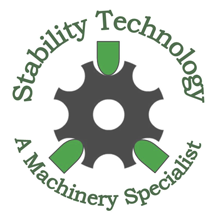Patent and Trade Secret Expert
An Expert in Manufacturing, Equipment & Machines, and Automation Devices
OSHA Standards
OSHA 1910.212(a) One or more methods of machine guarding shall be provided to protect the operator and other employees in the machine area from hazards such as those created by point of operation, ingoing nip points, rotating parts, flying chips and sparks. Examples of guarding methods are-barrier guards, two-hand tripping devices, electronic safety devices, etc.
OSHA 1910.212 (a)(3) The point of operation of machines whose operation exposes an employee to injury, shall be guarded. The guarding device shall be in conformity with any appropriate standards therefore, or, in the absence of applicable specific standards, shall be so designed and constructed as to prevent the operator from having any part of his body in the danger zone during the operating cycle.
Note that this last regulation allows OSHA to enforce any appropriate standard, which allows OSHA to enforce all relevant ANSI standards.
A large percentage of accidents occur because of failure to lockout/tagout the machinery during service and maintenance. The failure to lockout/tagout is one of the largest source of violations found by OSHA when investigating an accident.
When to Lockout / Tagout:
Lockout and Tagout is required by OSHA for any maintenance or servicing operation when:
An employee is required to remove or bypass a guard or other safety device; or An employee is required to place any part of his or her body into an area on a machine or piece of equipment where work is actually performed upon the material being processed (point of operation) or where an associated danger zone exists during a machine operating cycle.
Employers Must Develop a Lockout / Tagout Program
OSHA requires all employers to develop a specific program to ensure all machinery and equipment is locked out and tagged out during maintenance and servicing:
OSHA 1910.147(a)(3)(i) This section requires employers to establish a program and utilize procedures for affixing appropriate lockout devices or tagout devices to energy isolating devices, and to otherwise disable machines or equipment to prevent unexpected energization, start up or release of stored energy in order to prevent injury to employees.
OSHA 1910.147(c)(4)(i) The Control of Hazardous Energy (Lockout/Tagout): Procedures shall be developed, documented, and utilized for the control of potentially hazardous energy when employees are engaged in the activities covered in this section.
Procedure Requirements
OSHA has define a specific set of required elements which must be included in the Employer's Lockout / Tagout Procedures:
1910.147(c)(4)(ii)The procedures shall clearly and specifically outline the scope, purpose, authorization, rules, and techniques to be utilized for the control of hazardous energy, and the means to enforce compliance including, but not limited to, the following:A specific statement of the intended use of the procedure; Specific procedural steps for shutting down, isolating, blocking and securing machines or equipment to control hazardous energy; Specific procedural steps for the placement, removal and transfer of lockout devices or tagout devices and the responsibility for them; and Specific requirements for testing a machine or equipment to determine and verify the effectiveness of lockout devices, tagout devices, and other energy control measures.
Training of Employees
OSHA also requires that all affected employees are to be trained. This includes all machinery operators, maintenance staff, production workers, and "all other employees whose work operations are or may be in an area where energy control procedures may be utilized."
1910.147(c)(7)(i) The employer shall provide training to ensure that the purpose and function of the energy control program are understood by employees and that the knowledge and skills required for the safe application, usage, and removal of the energy controls are acquired by employees.


